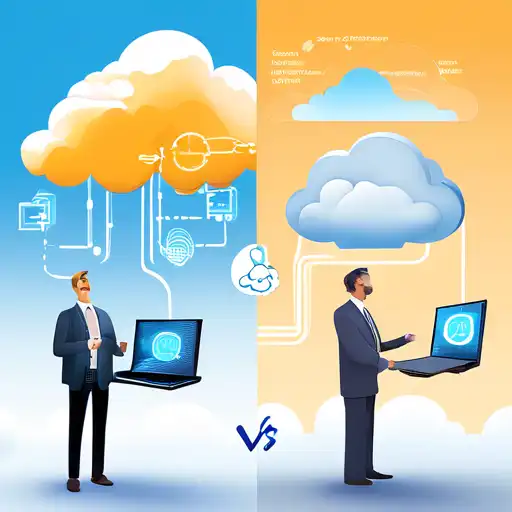Introduction to Edge and Cloud Computing
In the rapidly evolving world of technology, two terms have become increasingly prominent: Edge Computing and Cloud Computing. Both play pivotal roles in how data is processed, stored, and managed across the globe. However, they serve distinct purposes and offer unique advantages. This article delves into the key differences between edge computing and cloud computing, helping you understand which might be best suited for your needs.
What is Cloud Computing?
Cloud computing is a technology that allows for the delivery of computing services—including servers, storage, databases, networking, software, analytics, and intelligence—over the Internet ("the cloud") to offer faster innovation, flexible resources, and economies of scale. Users typically pay only for the cloud services they use, helping lower operating costs, run infrastructure more efficiently, and scale as their business needs change.
What is Edge Computing?
Edge computing, on the other hand, is a distributed computing paradigm that brings computation and data storage closer to the location where it is needed to improve response times and save bandwidth. The goal of edge computing is to process data near the edge of your network, where the data is being generated, instead of in a centralized data-processing warehouse.
Key Differences Between Edge and Cloud Computing
Data Processing Location
The most significant difference between edge computing and cloud computing lies in where the data processing takes place. Cloud computing relies on centralized data centers located far from the data source, whereas edge computing processes data locally or near the data source.
Latency
Edge computing significantly reduces latency because data doesn't have to travel over a network to a data center or cloud for processing. This is crucial for applications requiring real-time processing, such as autonomous vehicles or industrial automation.
Bandwidth Usage
By processing data locally, edge computing reduces the amount of data that needs to be sent to the cloud, thereby saving bandwidth. This is particularly beneficial in scenarios where bandwidth is limited or expensive.
Security and Privacy
Edge computing can offer enhanced security and privacy by keeping sensitive data within the local network, reducing exposure to potential breaches during transmission to the cloud. However, cloud computing providers invest heavily in security, making their platforms incredibly secure for a wide range of applications.
Choosing Between Edge and Cloud Computing
The choice between edge and cloud computing depends on your specific needs. If your application requires real-time processing with minimal latency, edge computing might be the way to go. On the other hand, if you're looking for scalability and flexibility, cloud computing could be more suitable. Many organizations find that a hybrid approach, leveraging both edge and cloud computing, offers the best of both worlds.
Conclusion
Both edge computing and cloud computing have their place in the modern digital landscape. Understanding the key differences between them is essential for making informed decisions about which technology to adopt for your specific needs. As technology continues to evolve, the lines between edge and cloud computing may blur, but their distinct advantages will ensure they remain integral to our digital future.
